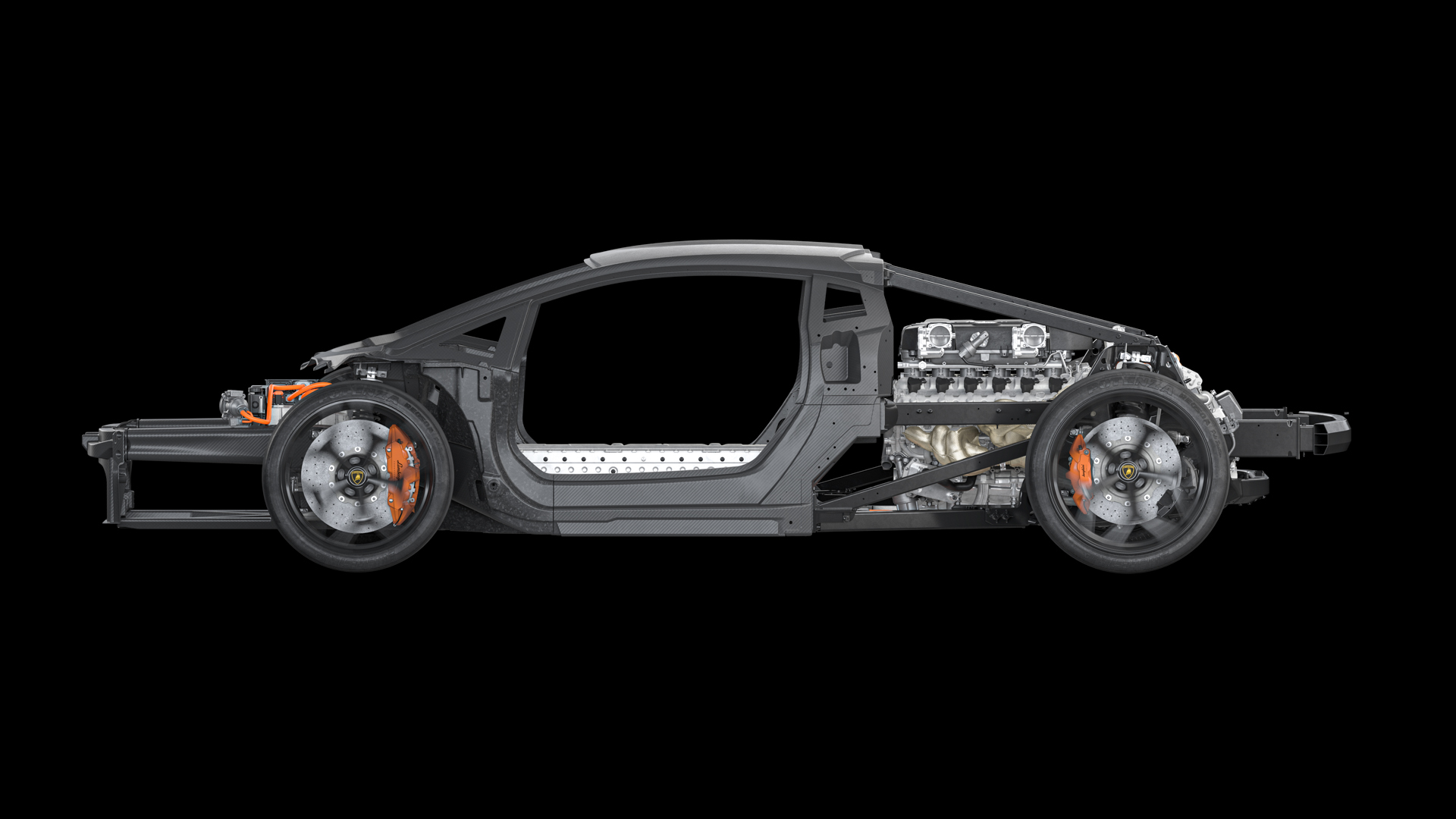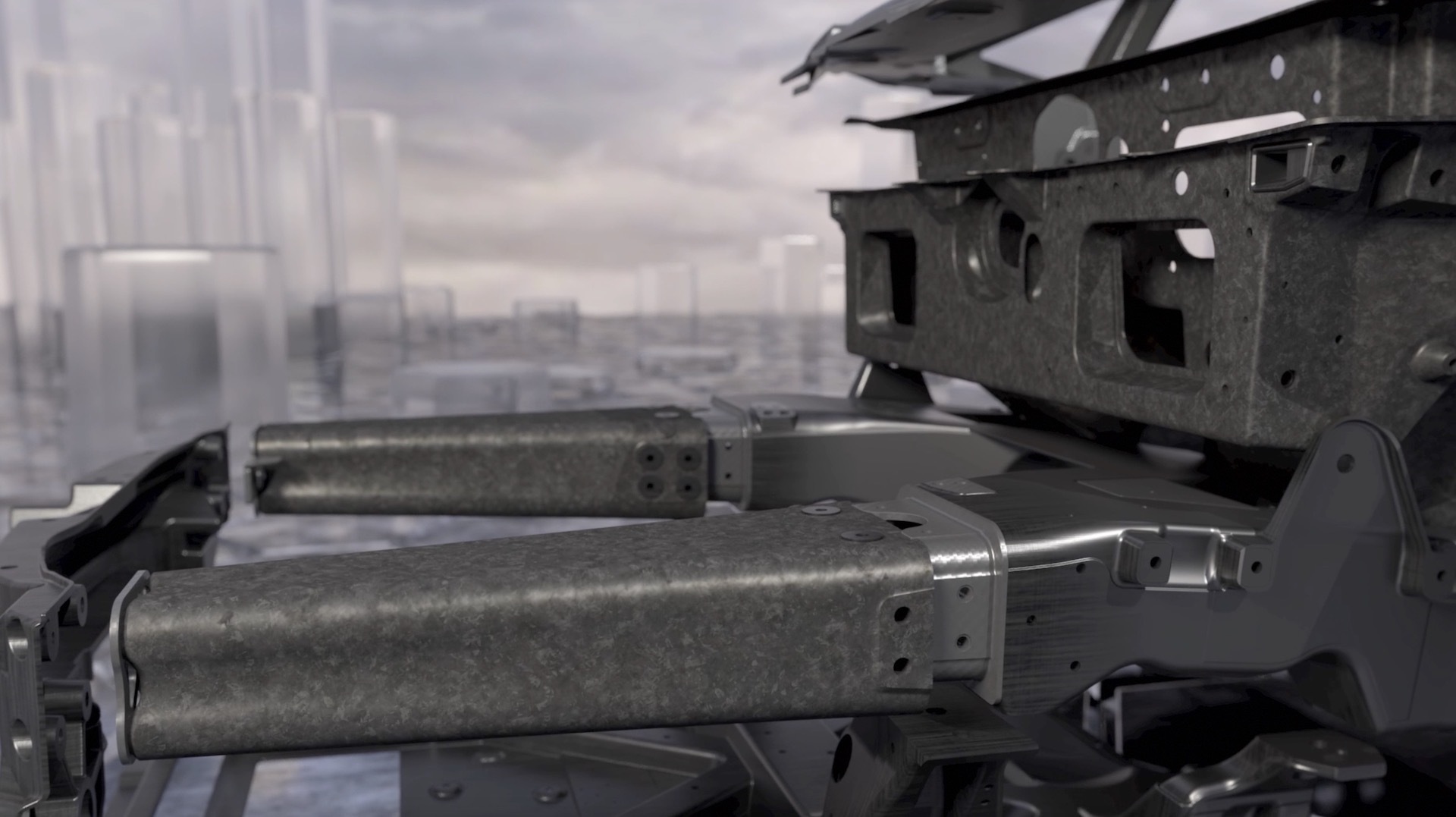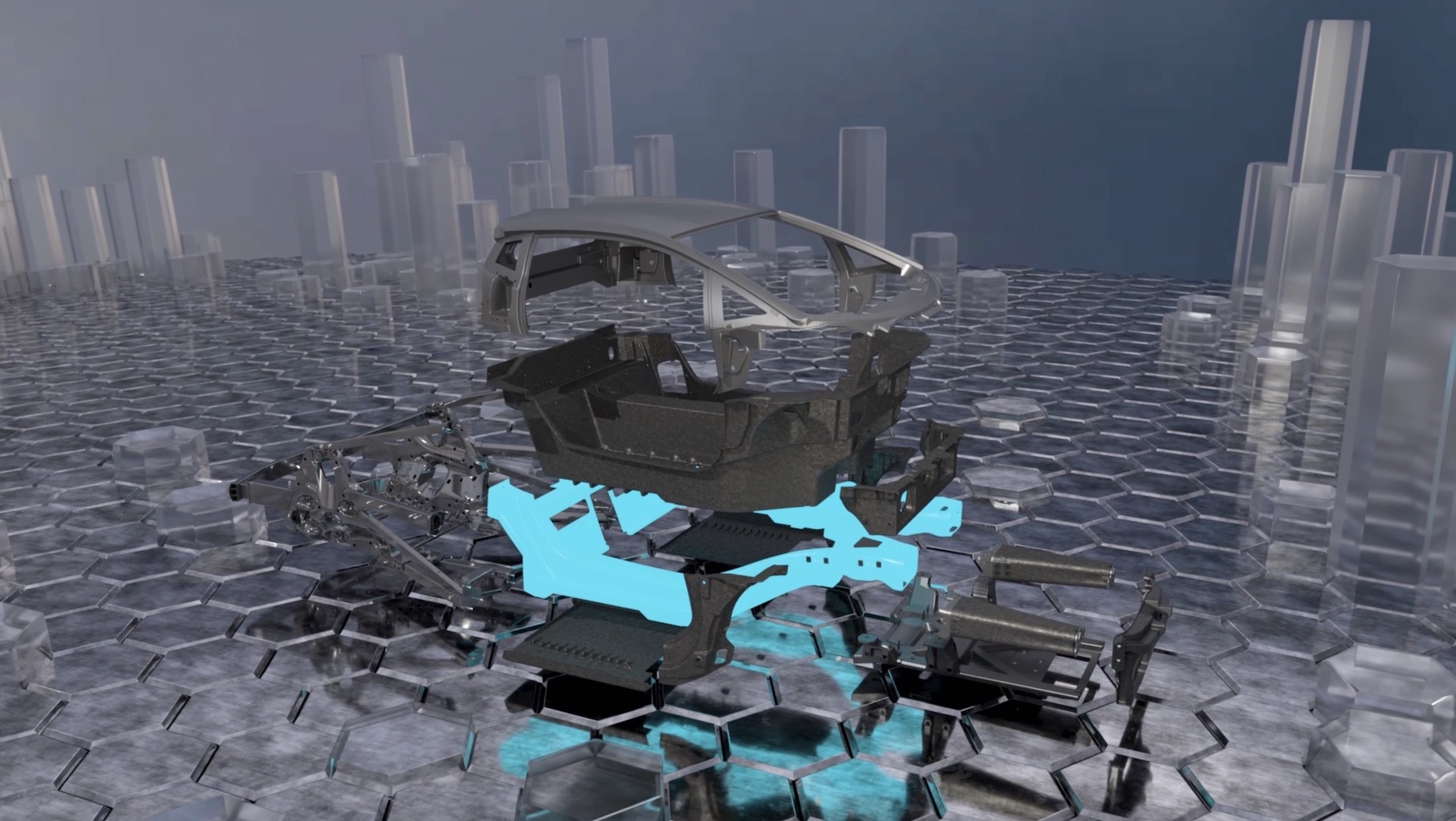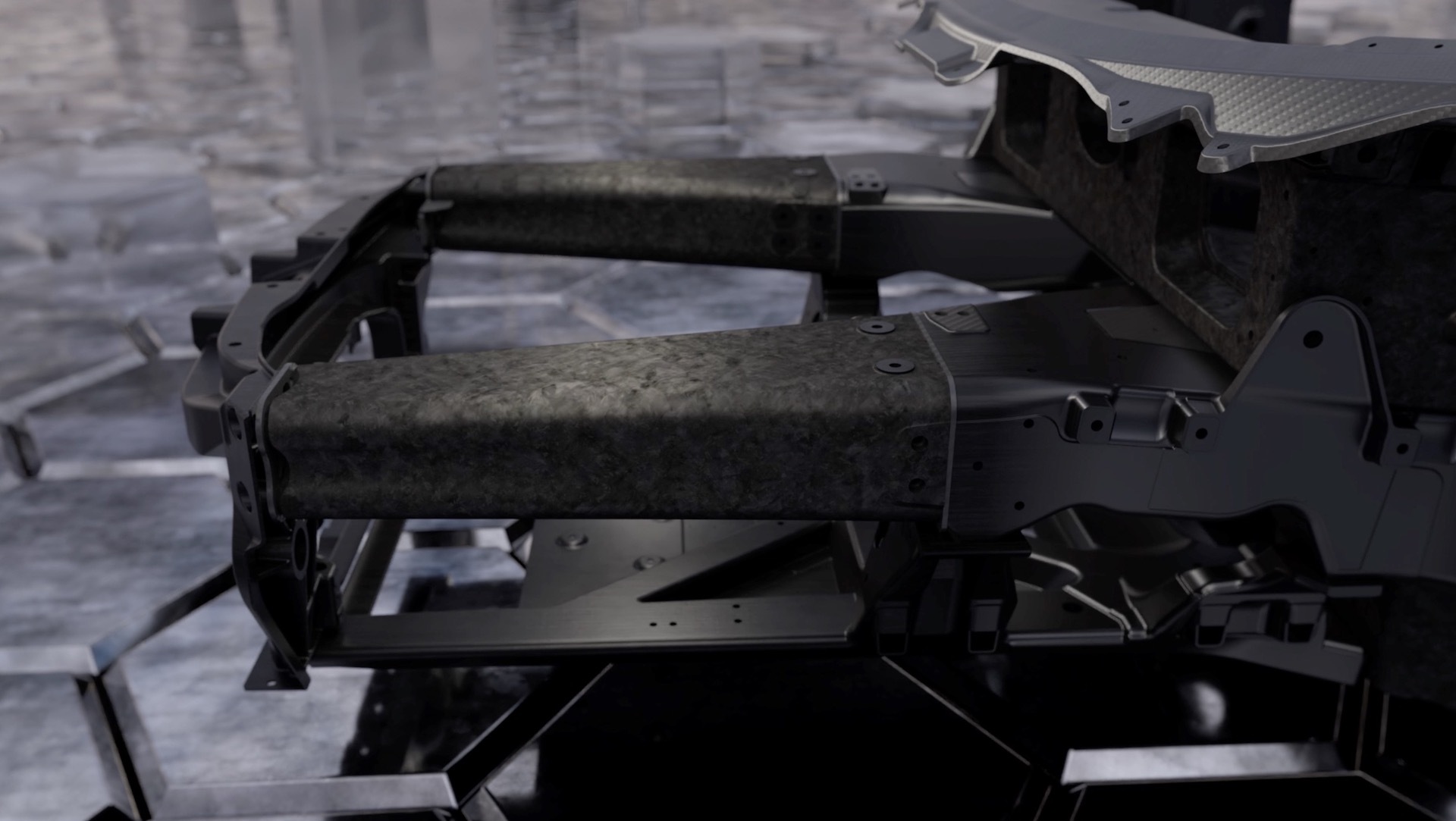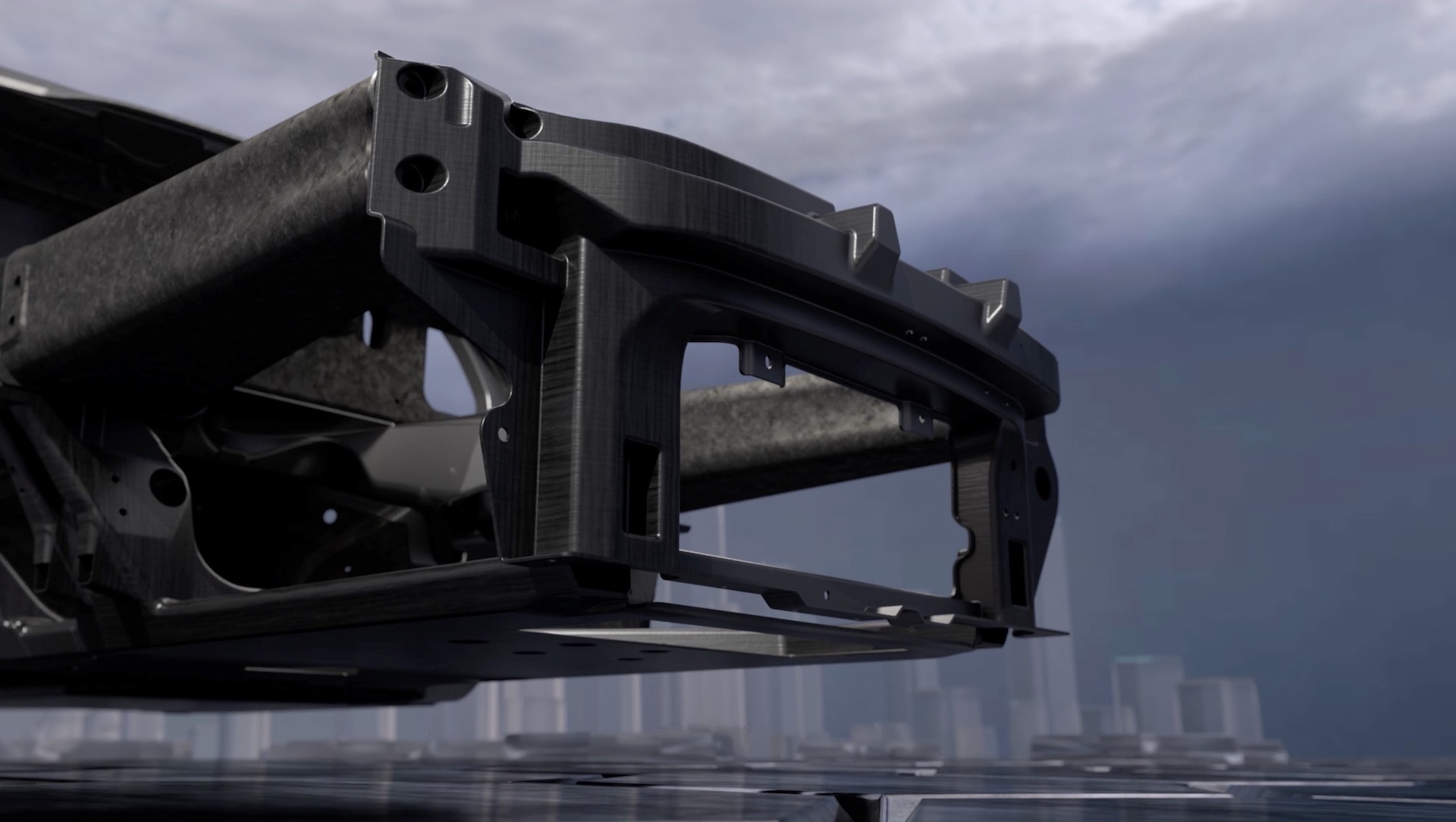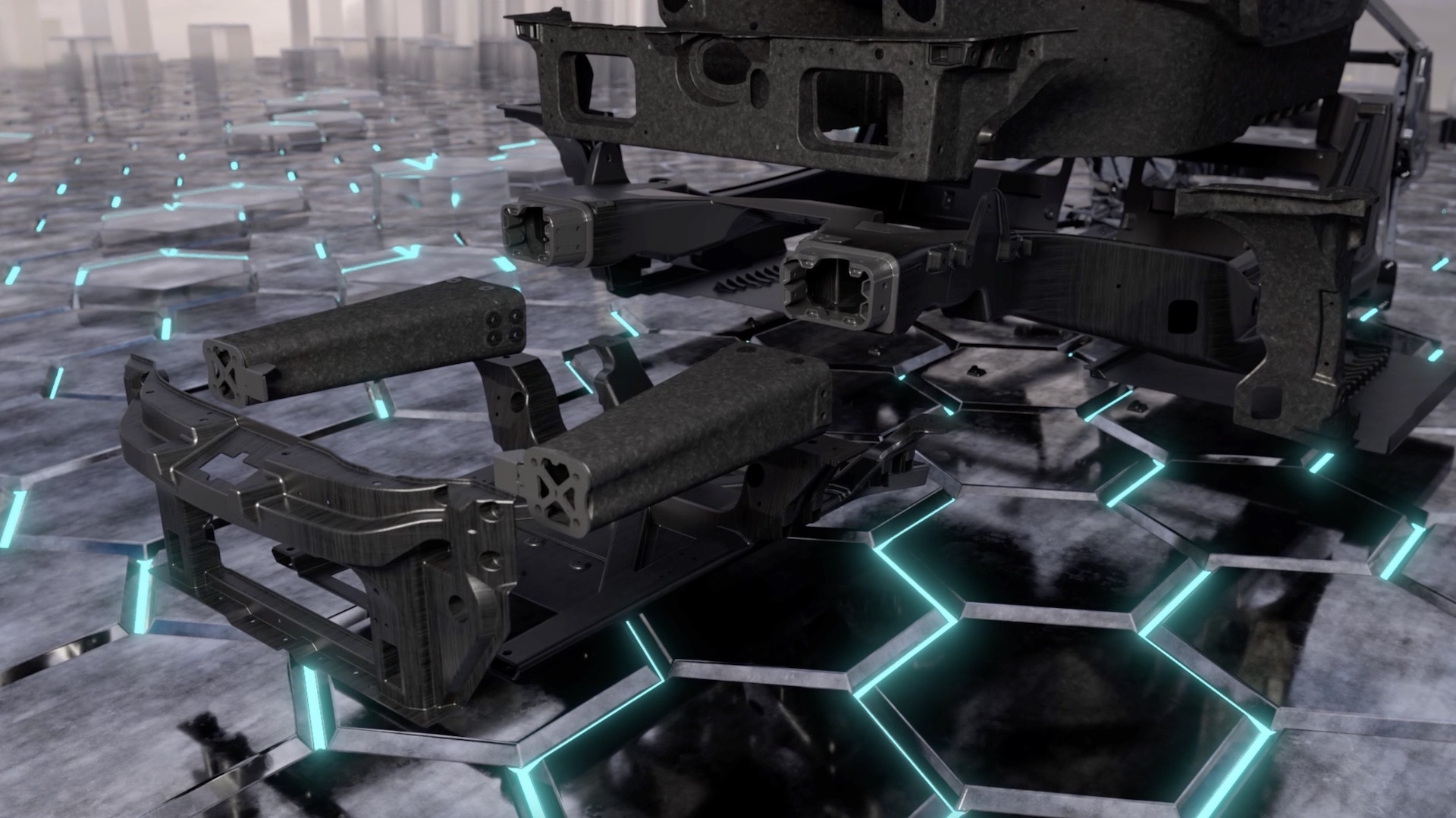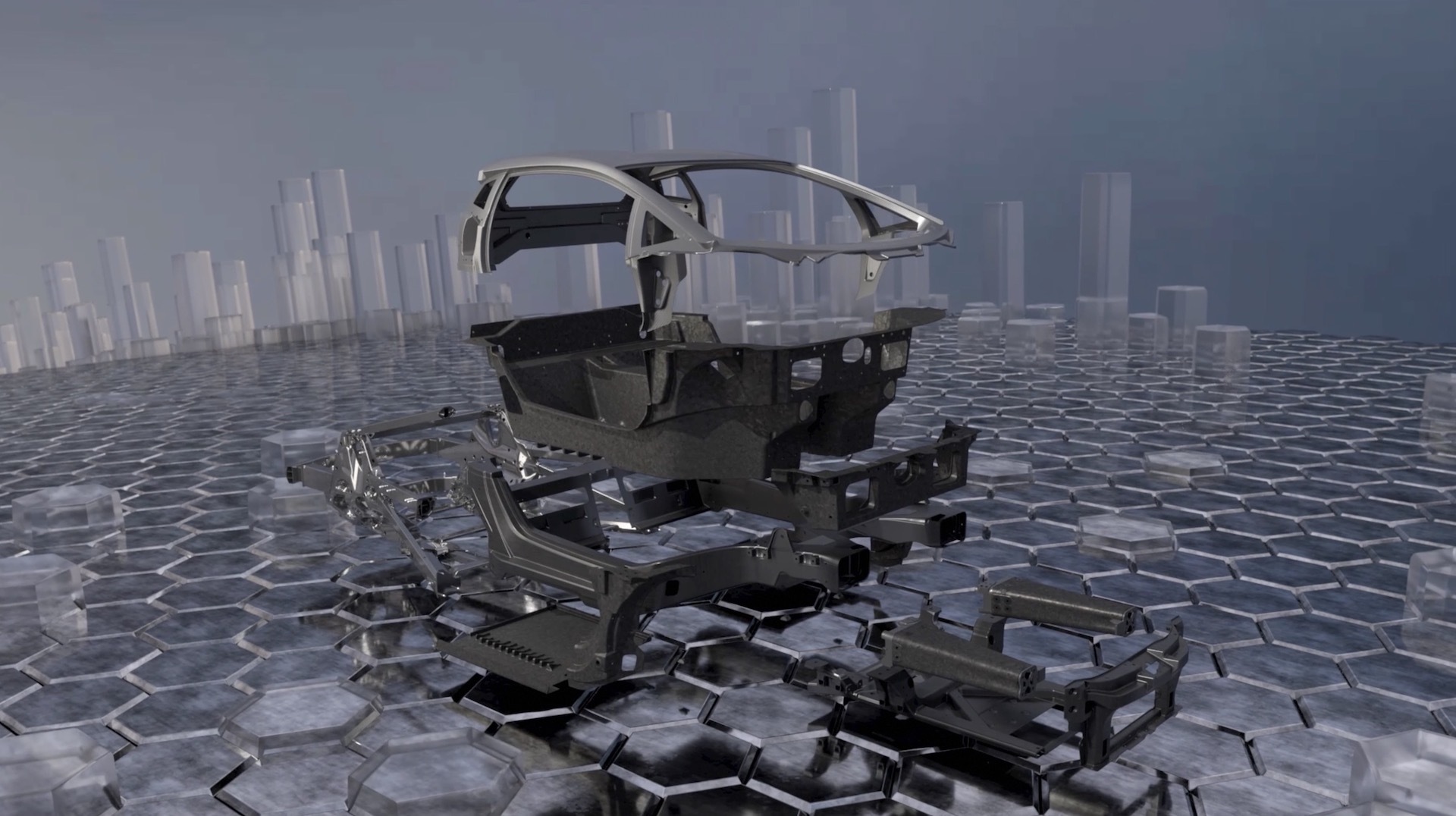Lamborghini has revealed more details about the the V12 hybrid Aventador replacement it will launch to the world later this month, including a carbon chassis structure that’s both lighter and stiffer than its predecessor’s.
The most interesting bit of the new chassis isn’t the carbon passenger compartment, something that already featured on the Aventador, but the new ‘rocker ring’ perimeter frame surrounding it and the front subframe assembly. Instead of being made of aluminium that front structure is constructed entirely from carbon fiber and is claimed to have twice the energy absorbance levels of the Aventador’s and weigh 20 percent less. It also makes the new supercar, codenamed, LB744, unique in its class, the company says.
Lamborghini calls this extended carbon structure a ‘monfuselage’ and says the new combined bare chassis structure is 10 percent lighter than the one it replaces, plus delivers 25 percent more torsional stiffness.
Related: New Lamborghini LB744 Flagship Makes 1,001 HP From V12 And Trio Of Electric Motors
The chassis isn’t an entirely metal-free zone, though. The rear bolt-on chassis structure containing the engine and rear suspension is again made from aluminium, but Lamborghini claims that integrating the suspension shock towers and powertrain suspension components into a single structure reduces both weight and the number of welds, while also resulting in increased rigidity.
Lamborghini managed to retain V12 power for its new flagship supercar, but has added PHEV technology to boost both its power output and green credentials. The 6.5-liter combustion engine generates 814 hp (825 PS) at 9,250 rpm plus 535 lb ft (725 Nm) at 6,750 rpm, but with the two electric motors up front and a third in the rear chiming in the total system output swells to 1,001 hp (1,015 PS).
The engine bay is a mercifully turbo-free zone, so the V12 stills spins to almost 10k revs and should still sound fantastic, but the torque fill provided by the electric motors in the low and mid range will help give it something approaching the urgency of a forced induction engine before the V12 really wakes up. The small 3.8 kWh battery is located within the transmission tunnel, can be charged in 30 minutes with a 7 kW supply and will allow the LB744 to run on electric power, but only for short periods.







